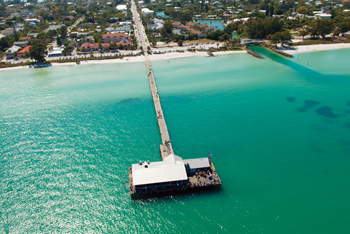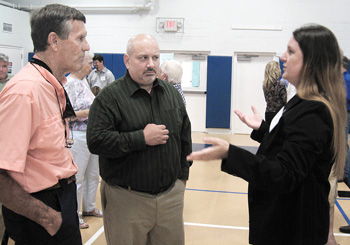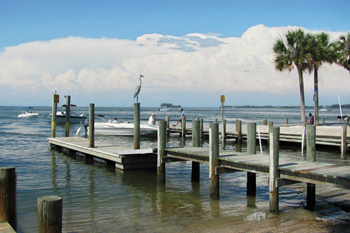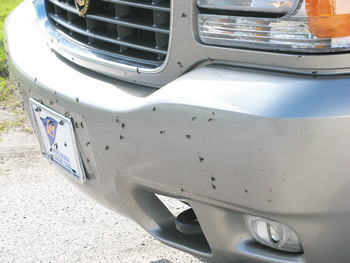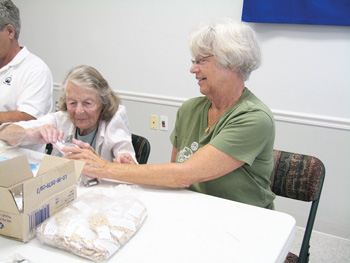The latest emergence of the small black flies with the little red markings is in decline, thankfully. We won't see them again until fall.
Their scientific name is plecia nearctica, but you won't hear anyone outside a university actually call them that.
They're members of the family of March flies. You may have heard them called honeymoon fly, double-headed bug, kissing bug or any of a list of other names that wouldn't be appropriate for a family newspaper.
Females are about a third of an inch long, while the smaller males are only about a quarter inch long.
The ladylove bugs get their way as a rule, and mate almost as soon as they emerge from their larval stage.
It's the mating that gives rise to the variety of names. Once mated, the female continues to fly around dragging the male with her.
Within three or four days, the female lays 350-to-400 eggs in decaying vegetation and then dies.
The eggs hatch and the larval stage of the creatures feeds among the leaves, dead grass and other plant matter.
Myths and fantasies
Love bugs are not, as urban legend would have it, the synthetic results of a University of Florida genetics experiment gone awry.
The fact that they are around for only a brief period gives rise to a lot of inaccurate speculation.
The immature stage of this insect is largely invisible.
And technically, they do not eat paint. That is, they don't remove it from the body of automobiles, ingest it and leave pitted paint behind.
What happens is that they die as they're smashed against windshields or the front of cars. When they're smashed, their body chemistry is actually neutral, according to Dr. Philip Koehler, and urban entomologist with the University of Florida. Then they become acidic if they're left on the car, and the acidic remains, especially the egg masses of the females, can cause pitting as it etches its way into the body paint and chrome of vehicles.
Car wash bonanza
Preventing that pitting and etching gives a boost to car wash businesses twice a year.
"We've been really busy this season," said Zack Kallis, a 17-year veteran of the car wash business. "It's worse than ever this time. We've seen almost a doubling in our business from what we usually see."
Walter Roman, who has worked on the back end of Kallis' business for the past ten years, said he's never seen it like this.
"We've been moving cars through here like I've never seen before," he said.
Jim Boyd of Bradenton was one of his customers this past Saturday.
"This is brutal," Boyd said. "You should see it out east. It's like a blizzard of black snow."
Dennis Joslin couldn't agree more. He was lined up to get his SUV cleaned off for the second time that day.
"I left home this morning in Vero Beach," he said. "I stopped half way here to get the bugs washed off, and now I'm doing it again."
Joslin said he'd do the same on his trip home after spending some time with relatives in Bradenton.
Ick factor
The bugs can be pesty, there's no question. If you have any white or light-colored painted surfaces around your house, you'll see more than your neighbors who have different colors.
Some visitors who haven't seen them before can become a bit unnerved.
"We do get some calls from renters demanding that we send a pest control company right out," said Carol Bernard, rental manager at Island Real Estate. "But mostly people are just curious, and when they find out the love bugs don't bite, they find it all interesting.
There's no question. The bugs are a nuisance, but since they don't cause any real harm, no one's taken the trouble to develop control methods. Any pesticides used would be harmful to bees and birds and other beneficial creatures.
And besides the love bugs would just be back as soon as the pesticide residue dissipates.
Gone but not forgotten
As the love bugs dwindle and fade from our consciousness, they're actually still among us.
"They're down there in the vegetation," Dr. Koehler said. "When the eggs hatch, the larvae eat all that decaying vegetation, which is of great benefit to the environment.
So next time a swarm of the bugs, which are not really bugs at all but flies, is flying around your head, be grateful for the decay of the vegetation. OK?
